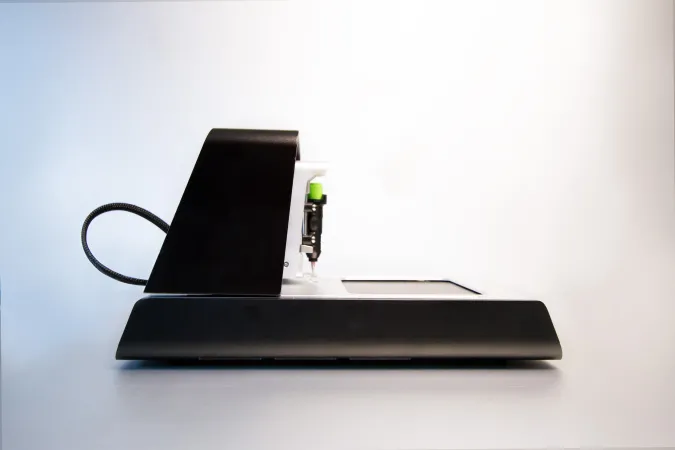The Voltera V-One lets you print your own circuit boards from home
This article was originally written and submitted as part of a Canada 150 Project, the Innovation Storybook, to crowdsource stories of Canadian innovation with partners across Canada. The content has since been migrated to Ingenium’s Channel, a digital hub featuring curated content related to science, technology and innovation.
There was a time when if you wanted to get your very own design of a printed circuit board you’d have to send a file and wait around for two weeks before seeing your work in the flesh. But then, after all your patience, you’d notice that they made a mistake and you’d have to get them to produce a new one.
Well, those days are over, thanks to the V-One, a PCB printer. Voltera is the company that created the machine and was founded by students at the University of Waterloo. They noticed the immediacy of modern culture and thought of applying that to circuit boards too. After all, 3D printers are becoming more and more common, so the idea of printing the circuits for a computer wasn’t that farfetched for this team.
Circuits board are those green plaques you see in computers with all of the trailing lines and tiny towers that make the whole thing look like the aerial view of a city. These lines and structures allow electricity to flow through the board and manage their different strengths and speeds in order to connect to different parts of the computer and within the board itself.
If you’ve ever heard of a “motherboard,” that’s really just a big PCB that connects to everything in the computer. Think of it like the spine of the machine. Everything the computer does goes through it and everything you do gets relayed by it.
Computer engineers and many computer science enthusiasts plan their circuit boards on computers and save them in a file format called gerber, or .gbr. After the blank board is mounted onto the V-One’s print bed it just needs to import the gerber. The process is straightforward and the software guides you each step of the way. It can print two-layer circuits and can even dispense solder paste so the designers can place certain bits manually.
Voltera began through the crowd-funding website, Kickstarter. They only asked for $70,000 dollars but were instead donated a total of 500 thousand dollars. Now, they operate from Shenzhen, China.
There’s no doubt this innovation is going to expedite the production of other innovations. Computer engineers will no longer have to waste time waiting for their prototypes when they can see the fruits of their labour grow right before their eyes.
By: Jassi Bedi


















